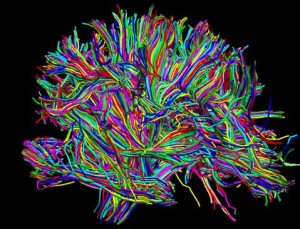Brain's White Matter Highly Predictive of Reading Acquisition
[Source: Medical News Today]

UC San Francisco researchers have used brain scans to predict how young children learn to read, giving clinicians a possible tool to spot children with dyslexia and other reading difficulties before they experience reading challenges.
In the United States, children usually learn to read for the first time in kindergarten and become proficient readers by third grade, according to the authors. In the study, researchers examined brain scans of 38 kindergarteners as they were learning to read formally at school and tracked their white matter development until third grade. The brain’s white matter is essential for perceiving, thinking and learning.
The researchers found that the developmental course of the children’s white matter volume predicted the kindergarteners’ abilities to read.
“We show that white matter development during a critical period in a child’s life, when they start school and learn to read for the very first time, predicts how well the child ends up reading,” said Fumiko Hoeft, MD, PhD, senior author and an associate professor of child and adolescent psychiatry at UCSF, and member of the UCSF Dyslexia Center.
PediaStaff is Hiring!
All JobsPediaStaff hires pediatric and school-based professionals nationwide for contract assignments of 2 to 12 months. We also help clinics, hospitals, schools, and home health agencies to find and hire these professionals directly. We work with Speech-Language Pathologists, Occupational and Physical Therapists, School Psychologists, and others in pediatric therapy and education.
